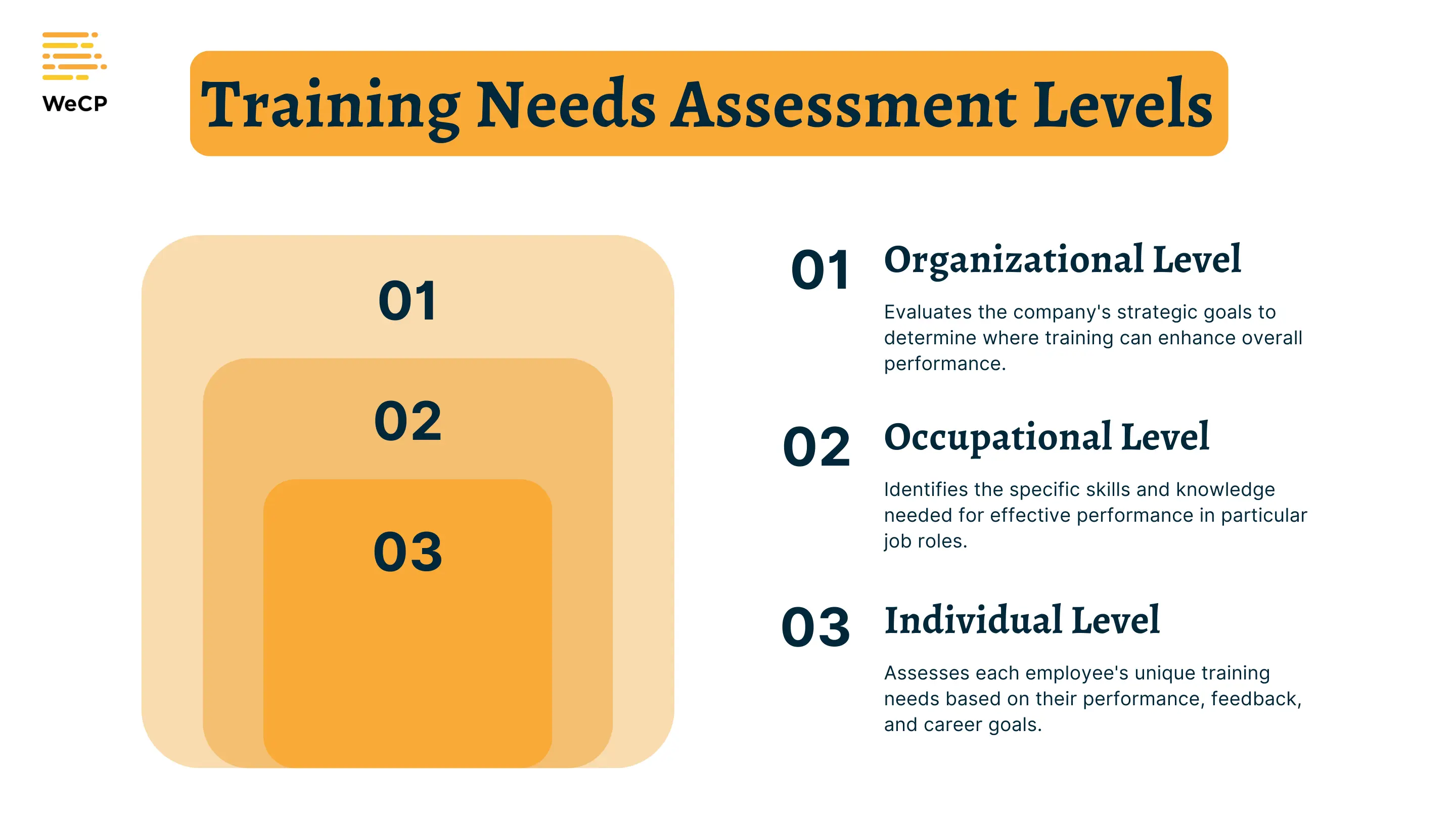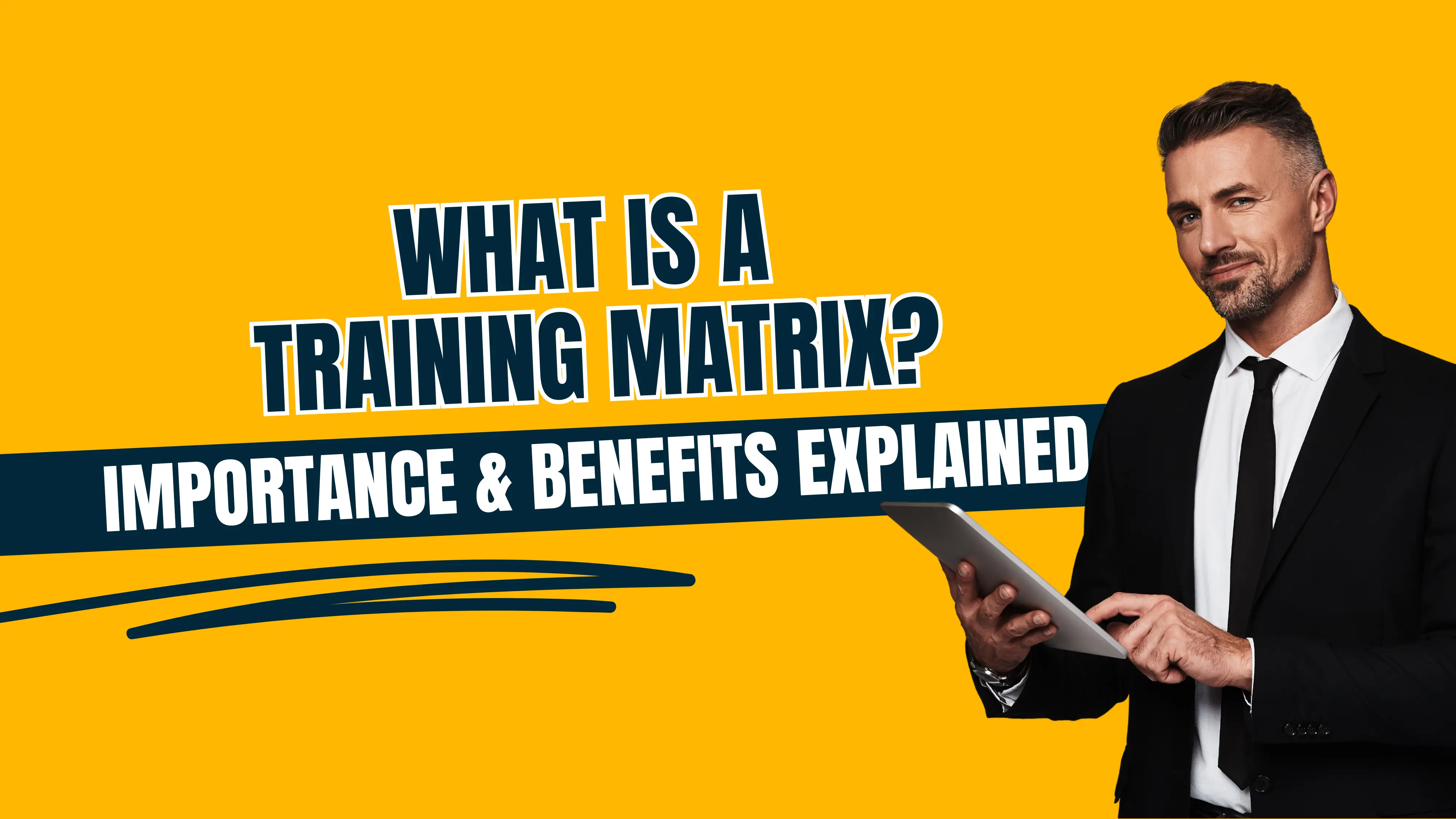The journey of an employee begins once they are recruited. However, it continues beyond there and needs improvement to achieve overall growth. This is accomplished through a training needs assessment.
It is a type of tool where the performance ‘gap’ and required knowledge, skills, and abilities are identified and further processed by closing this gap. About 76% of employees expect additional skills training from the organization, while 74% believe they are being left behind due to a lack of development opportunities.
A definite survey gives a measurement of how much training needs assessment is required. Thus, the entire process of identifying the competency gap, analyzing it, and conducting it using an effective approach is altogether a training needs assessment.
What Is a Training Needs Assessment?
Training needs assessment is the process of identifying the need for training for the employees when the performance requirements like knowledge, skills, and abilities are not met, and further proceeding with it to achieve overall growth of the employee and the organization.
Statistics claim that 59% of millennial candidates consider developmental and training opportunities produced by the organization before deciding to apply for the position. Hence, any organization must be well prepared with such contingencies.
A training needs analysis has to be conducted appropriately, by first identifying whether there is any gap between the employees’ performance and the required skills and abilities.
For example, when the company has adopted new changes in the management and the team member has to address it, they proceed with a meeting with all the employees without considering whether all of them need to know.
This eventually leads to a waste of time and resources. Therefore, a training needs assessment if put into practice can be helpful to avoid such kind of situations.
“Tell me and I forget, teach me and I may remember, involve me and I learn.”
– Benjamin Franklin
Before we dive further into the types and advantages of training needs assessment, we need to determine certain points - who, why, what, and how about training needs assessment.
Why conduct the training?
The need for training arises when the performance gap is identified, taking into account that the skills and abilities of the employee do not match the requirements of the organization.
Who needs the training assessment?
Training needs assessment is to be conducted once the gap is identified, and this will also tell who needs it. Once the individual is identified it will be helpful in the future training processes such as planning and organizing it.
What kind of training do they need?
The type of skills or training to be provided needs to be determined to manage an easy and efficient training process.
How to proceed with the training?
To proceed with the training, the organization needs to follow steps to make it more effective.
What are the factors that lead to training needs assessment?
Few circumstances like succession planning, training a new hire, layoffs or transfers, re-locations, or restructuring of the system in the company are likely the reasons for training needs assessment. Also, when conducting new or improved processes or introducing new technology may be some grounds needed for training.
Types of Training Needs Assessment
There are three types of training needs assessment. They are:

Organizational Level Assessment
This level of training needs assessment works on a larger level, where the entire organization's performance is observed. This gives the members to be prepared and work through the organization’s goal on a broader scale. Here, the following steps are conducted:
- An organization needs to initially identify the strengths, capabilities, and areas that need improvement.
- Each department’s performance needs to be evaluated and determine its overarching needs.
- External factors like changes in economic conditions, new technological advances, or shifting demographics also need to be considered.
- Lastly, establish the skills, knowledge, and abilities required to achieve the target goals are met.
Organizational-level assessment is mostly beneficial when the entire company goes through major changes like new leadership, job re-organization, or a shift in the company’s goal.
Occupational Level Assessment
Next comes occupational-level training needs assessment which focuses on the specific requirements of different job roles within the organization. A few points that need to be considered are:
- Need to establish whether any inconsistencies or knowledge gaps are present in occupational groups, especially when changes are being made.
- New improved methods to resolve these gaps need to be developed.
- Analysis of performance standards and present workplace practices needs to be conducted.
- Lastly, to ascertain that these occupational groups are thoroughly oriented with the organization’s extensive goals.
Individual Level Assessment
This type of assessment features individual employees, examining their performance, potential, and training needs. The individual-level assessment provides personalized evaluation where training solutions are designed for each employee to promote further growth opportunities within the organization. It has features such as:
- Evaluation of employee performance on given tasks.
- Analyzing the capabilities of employees when given different or extra responsibilities.
- Determining the need for specific training or development to improve the performance gap.
Benefits of Conducting a Training Needs Assessment

Employee Satisfaction
The first goal of a training needs analysis is to help promote the professional growth of employees as well as the organization. This is achieved through identifying such employees and further developing a plan to train them. Thus, this aids in training the right employee for the right job with the right approach.
Identify and Improve Performance Gaps
The second goal is to determine the performance gaps, and whether there is any lack of skill or knowledge among the employees. If such a gap exists it further encourages the employees to take competency assessments in specific areas.
Conserve Resources
The next goal focuses on the conservation of resources in terms of money and time, as it helps to deviate these resources to matters of priority and thus, avoid unnecessary training. Such assessments also are beneficial as they help in measuring qualitative and quantitative data.
Improved Work Productivity
The goal of training the employees leads to effective work productivity of those individuals, thus, boosting their morale and improving employee engagement. It also helps in encouraging the employees to become more innovative and efficient in their jobs.
Attain Business Goals
Lastly, the overall quality of services becomes efficient, and meeting the organization’s goals becomes attainable, thus, gaining a higher return on investment.
How To Conduct Training Needs Assessment
Identify the Motive and Objectives for a Training Needs Assessment
Before initiating the training analysis the motive for training needs to be determined such as whether the performance gap exists, identifying which teams need to be trained, and finding opportunities to provide employees the chance to grow. Also, there are key questions that need to be addressed such as -
- Is the assessment necessary for the organization?
- What is the reason for conducting this assessment?
- Is the ultimate goal of the organization being accomplished by this assessment?
- What type of training program will help in bringing the organization’s ultimate goal into effect?
Collect Necessary Information
Once the need for the assessment is established and the organization’s goal is determined, the next step is to collect the information required for the assessment, such as current skills, knowledge gaps, and performance issues.
This is done through surveys, focus groups, or reviews and feedback. Such information is necessary to gather as it gives a complete picture of where the employee is lacking thus, giving a chance to the organization to develop training programs accordingly.
- Surveys help in gathering quantitative and qualitative data that helps to find training gaps and areas of improvement.
- Surveys may provide generic information, and therefore gathering data via questionnaires asked to individuals or focus groups may give an in-depth understanding of the work deficiencies found among the employees. Thus, key points of information are uncovered.
- Apart from surveys and focus groups, feedback from employees can also play an important role in providing information about where the employees are lacking and require additional training. This may help in identifying performance gaps and further designing a training program.
- Employees’ skills and abilities as well as knowledge and performance can be directly observed at their workplace, enabling the organization to associate any improvement needed.
Examine, Evaluate, and Explain the Data Collected
After collecting the necessary data for training needs analysis, the next step is to analyze and evaluate it systematically. It involves a thorough investigation through which the organization can obtain insight into the concerns regarding specific training requisites.
This ensures a comprehensive understanding of the further analysis process where key individuals like department heads, team leaders, and employees will be made to participate actively. Such a collaborative approach gives surety to the training needs assessment process that aligns with the organization’s objectives and goals.

Create and Execute the Training Strategy
Following the evaluation process comes the next step of creating a proper resolution to the problem. Here, training programs, courses, or interventions are designed to get accustomed to the training needs and also address the competency gap issue while achieving the organization’s goal at the same time.
A few points need to be considered while developing the solution such as the teaching strategies, resources, and the desired outcomes of the training.
Initiate the training process which can be done virtually or in-person instructor-led courses, self-guided webinars, computer-based simulations, and online training. All these processes might involve certain changes in organizational processes or incorporating new tools and techniques.
All in all, the timeline, availability of resources, and the prioritization of the needs determine the format of the training needs assessment.
Analyze the Results
Finally, after the conduction of the training needs assessment, it is a good practice to analyze the results, to ensure the training is worth the effort and expense. The effectiveness of the analysis provides the organization clarity, and further aids them to carry out such assessments for effective functioning.
Conclusion
To summarize, a training needs assessment is an important necessity for any organization. It allows the organization to look at the employees' working conditions, where they are lacking, and provide them with the required training and skills. A training needs analysis aims at filling the competency ‘gap’ by identifying what skills, abilities, or knowledge an employee or a team needs.
Although 59% of employees come up with their own strategies for upskilling, 76% of employees would be happy if a company offered additional skills training to them. All these statistics indicate that an organization if invests in such training needs assessments will benefit altogether in terms of employee satisfaction and company turnover.
A training needs assessment can be conducted using various skills assessment tools found on numerous platforms. WeCP is one such platform that caters to these needs which is not only convenient but also a solution to all of the recruiting & learning and development needs.
Want to know more on how WeCP can help you out? Try WeCP for free or Schedule a Call with us.



.png)








.svg)